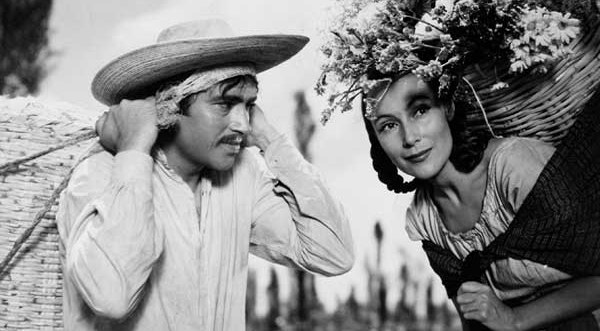
Two of the year’s most interesting film series are either underway or just about to launch, and for no clear reason, the local Los Angeles arts media is ignoring both.
- Already underway since last weekend is LACMA’s “The Golden Age of Mexican Cinema,” a 13-film survey of the work of the great Mexican cinematographer Gabriel Figueroa running Fridays and Saturdays until October 11. It’s the museum film program’s contribution to the touring Figueroa show, “Under the Mexican Sky,” now on view at LACMA’s Art of the Americas building. Taken together, the survey marks the most wide-ranging look at earlier Mexican cinema, at least in North America, in many years. It includes such fascinating tributaries as director Roberto Gavaldon’s three adaptations of B. Traven short stories (including “Dias de Otono,” screening today Saturday at 5 p.m.), as well as the crowning masterwork of Mexico’s first golden age, Emilio “El Indio” Fernandez’ 1944 “Maria Candelaria,” starring Dolores del Rio. I can attest that the prints for the series, curated by Bernardo Rondeau, are in virtually mint condition. And yet, audiences have been thin so far, most likely due to the Los Angeles film media failing to report on it. This is a city where the film audience is far ahead of the film press that writes for it.
- Let’s see if the same dilemma applies to Cinefamily’s astounding October midnight series, “The United States of Horror.” Every October night at the witching hour, the city’s most inventive cinema has slotted something wicked/nasty/crazy/bloody/mad, each set in a different state of the union. (Thus, Arizona is represented by Donald Cammell’s awesome “White of the Eye,” on Oct. 2.) Organizing a series according to a road trip of the states—from So Cal through the West, on through the Midwest to the East, then down into the Deep South and returning to So Cal—is unique in my experience as either a critic or programmer. But the series goes further: Movies have been selected for their extreme rarity (Roger Watkins’ 1977 “Last House on Dead End Street,” on Oct. 18), extreme gonzo quotient (Chester Turner’s 1980s video-shot pieces of horror surrealism, “Black Devil Doll from Hell” and “Tales from the Quadead Zone” on Oct. 12), or extreme legendary status (Tobe Hooper’s 1977 “Eaten Alive,” his superior follow-up to his “Texas Chainsaw Massacre”). Or all three at the same time. And if this doesn’t stir you, just go to Cinefamily’s site and scan the program notes. They’re written with a perfect balance of poetic flow, panting fan enthusiasm and sheer joy too often missing from dry film and festival sites.
- Speaking of festivals, my favorite on the world circuit is in Locarno, held in early August in the far southern Swiss burg by the shores of the stunning Lake Maggiore. It’s Telluride on steroids: A more spectacular mountain setting, and a far greater survey of new and old cinema than that Rocky Mountain confab on Labor Day weekend. (Just this edition alone, the entire filmography of George Cukor was screened.) But because of the vagaries of the American movie-showing business, few Locarno films manage to reach U.S. screens. Here’s an exception, which opened Friday at Laemmle’s Town Center Five in Encino: Manuel von Sturler’s “Hiver Nomade,” a thoughtful and transfixing observational documentary on Swiss shepherds and their flocks (it premiered at the 2012 Berlin film festival). This is the sort of movie that gets away from American cinemas and film festivals, so its presence is little short of a miracle.
Robert Koehler, a film critic for Film Comment, Cinema Scope and Cineaste, blogs about movies on arts·meme.
